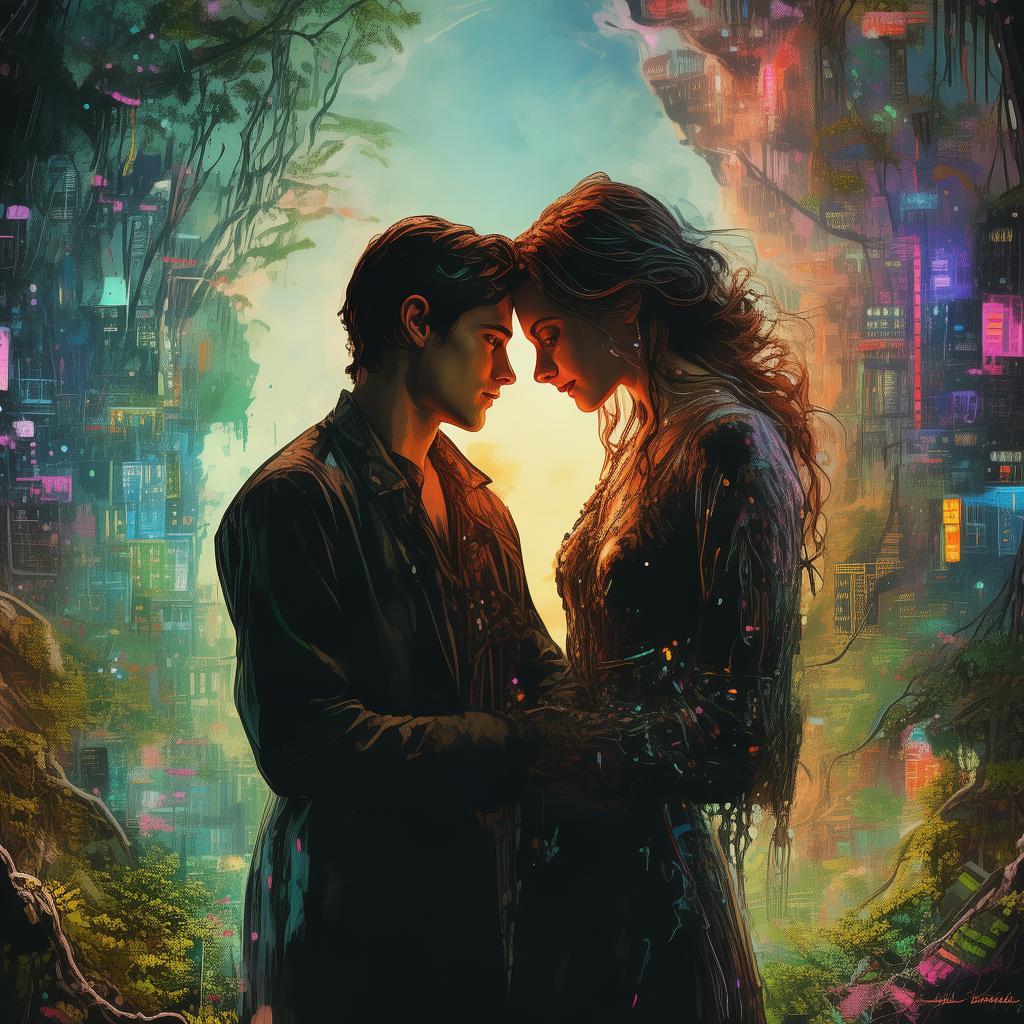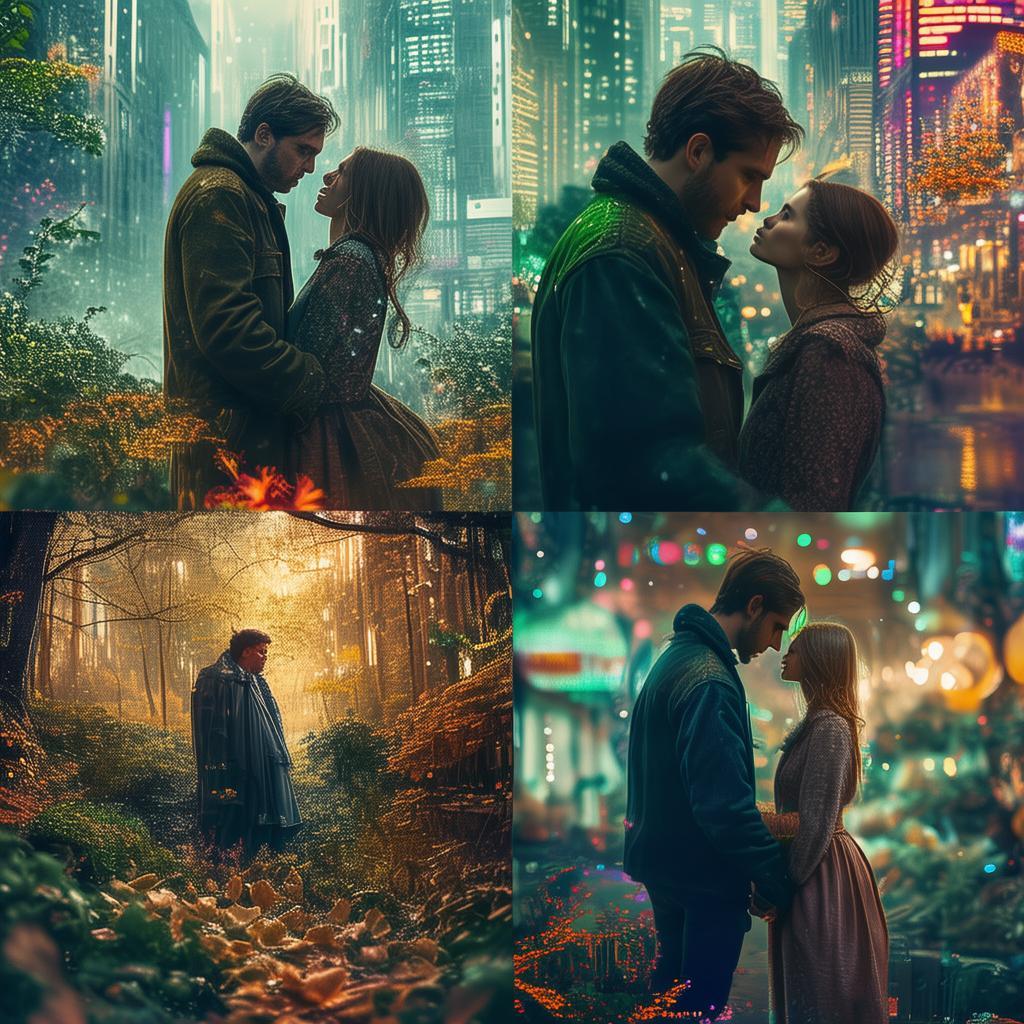The Baroque Waltz of Two Lost Souls
In the heart of the Baroque city of Amsterdam, where the streets were paved with cobblestones and the canals sparkled with the morning light, there lived two men, each with a past shrouded in mystery. The first, a composer named Hendrik, was known for his intricate waltzes that danced through the ears of the city's elite. The second, a painter named Jacob, was lauded for his masterful use of light and shadow, capturing the essence of human emotion on canvas.
Their lives were worlds apart, yet fate had a peculiar sense of humor. Hendrik, a foundling raised by a wealthy family, was a musical prodigy, his talent as natural as the sunlight that filtered through the windows of his music room. Jacob, a child of beggars, was a prodigious artist, his brushstrokes as deft as a magician's sleight of hand.
It was at the annual masquerade ball that their paths first crossed. Hendrik, the composer, was in search of inspiration, and Jacob, the painter, was seeking a commission. The air was thick with the scent of orange blossoms and the sound of violins. Masks adorned with intricate designs adorned the faces of the guests, but beneath them, there was a story waiting to be told.
As the music swelled, Hendrik found himself captivated by a woman in a mask that seemed to tell a story of its own. Her eyes, hidden behind the mask, held a depth that drew him in. It was then that he heard the melody, a waltz that seemed to be a conversation between two souls, one of love and the other of loss.
Jacob, standing nearby, watched as Hendrik approached the woman, who was none other than his adopted daughter, Elise. Her mother had been a street singer, and her father, a man whose name was a whispered secret among the city's underbelly. Elise, raised by Hendrik and his family, knew little of her true heritage, but her heart had always yearned for something more.
The waltz they danced that night was the first of many that would intertwine their lives. Hendrik composed more music for Elise, and Jacob painted her portrait, capturing the essence of her spirit. Yet, as their bond grew, so did the walls of secrecy that surrounded them.
The truth about Elise's origins began to unravel, and with it, the lives of Hendrik and Jacob were thrown into chaos. The composer and the painter, who had found solace in their art, were now forced to confront the darkness that lay beneath the surface of their lives.
As the story of Elise's parents emerged, it became clear that their love was as forbidden as the very art they created. Her mother, a courtesan, and her father, a nobleman, had been separated by the rigid class system of the era. Their love had been a whispered secret, a flame that could have consumed them both.

Hendrik, torn between his love for Elise and his loyalty to his adoptive family, found himself at a crossroads. He could continue to protect Elise from the truth, or he could risk everything to reveal the secrets that had shaped her existence.
Jacob, the painter, faced his own demons as he discovered the truth about Elise's parentage. He was the son of the nobleman who had abandoned his love, and Elise was the daughter he had never known. The revelation was a heavy burden, one that would test the strength of his art and his heart.
As the Baroque city continued to thrive, its canals flowing with the secrets of its inhabitants, Hendrik and Jacob were forced to confront the past that had shaped their lives. Their love for Elise was a beacon in the darkness, a reminder that even in the most difficult of times, there was hope.
In a final act of bravery, Hendrik revealed the truth to Elise, and together, they sought to understand the legacy of her parents. Jacob, now the adoptive father, stood by their side, his art as a testament to the love that had brought them together.
The Baroque Waltz of Two Lost Souls was not just a love story; it was a tale of redemption, of art that transcended time, and of the power of love to overcome the deepest of wounds. In the end, it was a story that would resonate through the ages, a reminder that love, in all its forms, is the most enduring of legacies.
✨ Original Statement ✨
All articles published on this website (including but not limited to text, images, videos, and other content) are original or authorized for reposting and are protected by relevant laws. Without the explicit written permission of this website, no individual or organization may copy, modify, repost, or use the content for commercial purposes.
If you need to quote or cooperate, please contact this site for authorization. We reserve the right to pursue legal responsibility for any unauthorized use.
Hereby declared.









